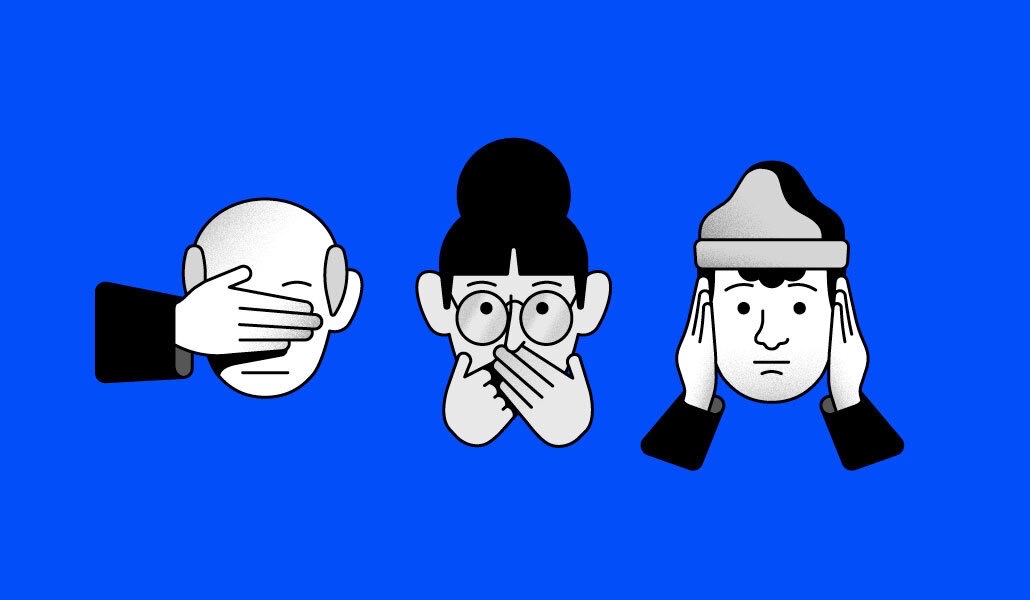Why eliminating ‘bystander syndrome’ is crucial for ending harassment of women on social platforms

When gender equality consultant Sharon Peake shared in February an image of a CEO lunch calling out the lack of diversity among three tables of white, grey-haired men in matching suits, it wasn’t just the 1.8 million views, 13,000 likes and 1,000+ comments that she hadn’t anticipated, but the number of negative comments — all from men.
Responses ranged from branding Peake’s critique of the event as “bullsh*t” and “sooo ridiculous”, to calling her a “professional complainer” with “constant victimhood mentality”. Further comments suggested that imbalance isn’t illegal, so Peake should “quit complaining”, and that in any case, “men are better qualified for that job”. These appeared as both responses to her LinkedIn post and direct messages. And when other LinkedIn members — both men and women — came to Peake’s defense on the comment thread — the haters got even more aggressive.
While London-based Peake acknowledges the negative comments were in the minority, she felt they crossed the line from constructive debate to personal attacks, and decided to take action. She stopped short of reporting commenters to their employers — as listed on their LinkedIn profiles — but wanted to give people a chance to explain so contacted a few of the worst offenders directly. She said one publicly apologized. One removed his comments. A third, however, refused to back down.
Peake also reported a number of the comments to LinkedIn, with just one of her complaints upheld because it featured swearing and the others didn’t. That person was removed from the platform.
“The only reason there was a reaction is because there’s truth to my message. People don’t like hearing the truth, so they were attacking me personally. This was the thing that I took exception to as I’m all for a reasoned argument. But it wasn’t a debate, and that didn’t feel very balanced, fair or appropriate for LinkedIn,” Peake told WorkLife.
She added: “I did look for themes, and they all came from male-dominated industries. There were one or two from really reputable organizations, which shocked me that people are not enlightened enough to realize their employer might see this. Some of these men probably have never had a reasoned conversation with a woman about gender equality, because they’ve only worked with men, I’m guessing.”
Peake’s experience reflects a number of disturbing trends in online harassment. Firstly, that women are especially vulnerable, with 61% of women in a Pew Research study of 10,000 Americans saying online harassment is a major problem, compared with 48% of men. Secondly, that men in particular demonstrate a lower awareness of what’s considered harassment. A study of 1,200 U.S. employees by e-learning provider Epignosis revealed that 69% of men believe suggestive remarks are considered sexual harassment, compared to 92% of women. Additionally, 47% of men believe making comments about someone’s gender identity counts as sexual harassment, compared to 73% of women.
Peake’s defenders were also attacked — a factor that doesn’t improve bystander syndrome, even in an online environment, because people are afraid of retaliation.
Peake believes companies have a responsibility to train their staff on what’s acceptable to post online and to develop a culture of allyship to eliminate bystander syndrome. She is also escalating her complaint to LinkedIn, with the belief that online platforms themselves need to double down on monitoring and responding to abusive comments.
A LinkedIn spokesperson, however, insisted that it doesn’t tolerate any form of harassment, and has introduced a more transparent reporting process. This has led to an increase in the amount of abusive content removed from the platform, according to its latest Transparency Report.
Some users are finding it more effective to take matters into their own hands. Leah Steele, a burnout coach from Bristol, U.K., estimates that around 25% of her monthly business expenses are dedicated to keeping her safe. These include a landline number that diverts to her mobile — a secondary work one — that doesn’t disclose her address, and a virtual office so she also doesn’t have to disclose her home address on invoicing and documents.
A series of continuous unsolicited comments and messages from a man on LinkedIn and Instagram that left her distressed and anxious is what forced her to make the call.
“This person had created multiple fake accounts to keep tabs on me and had me feeling sick with comments like, ‘I will be watching you’,” Steele recalled.
Steele reported him to Instagram, but was told the comments and messages were not in breach of platform guidelines. She blocked him on LinkedIn, and can’t report him there without unblocking him, which she is reluctant to do. LinkedIn has offered to investigate the situation further. Instagram didn’t respond to a request for comment in time for publication.
Like Peake, Steele believes social media platforms should be stricter when it comes to harassment.
“Unless there are consequences to people’s actions, there’s no reason for them to stop,” Steele stated. “The other thing I considered was reporting this guy to his employers. But then, that’s me taking vigilante action, rather than being able to say ‘this is not OK’, in a wider context. There has to be that wider context — otherwise, it’s just bitches online, right?”

